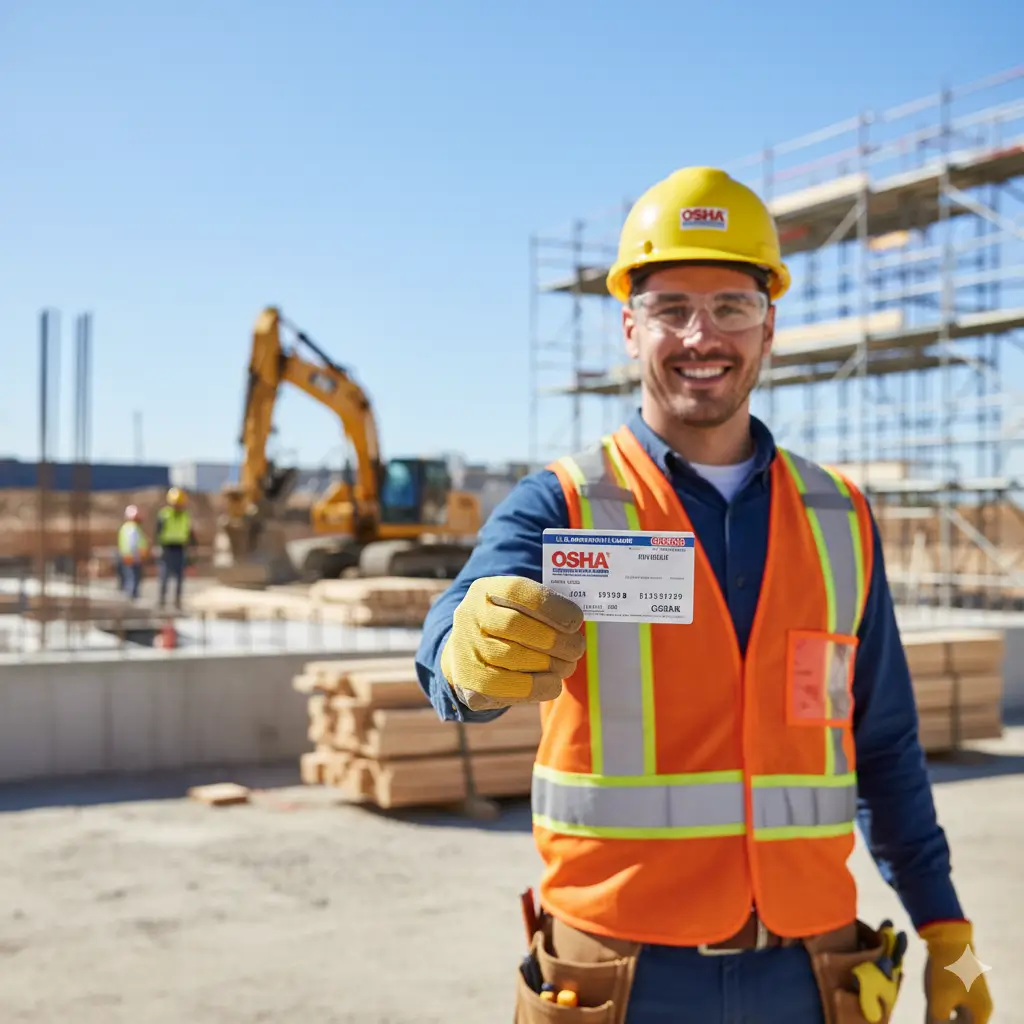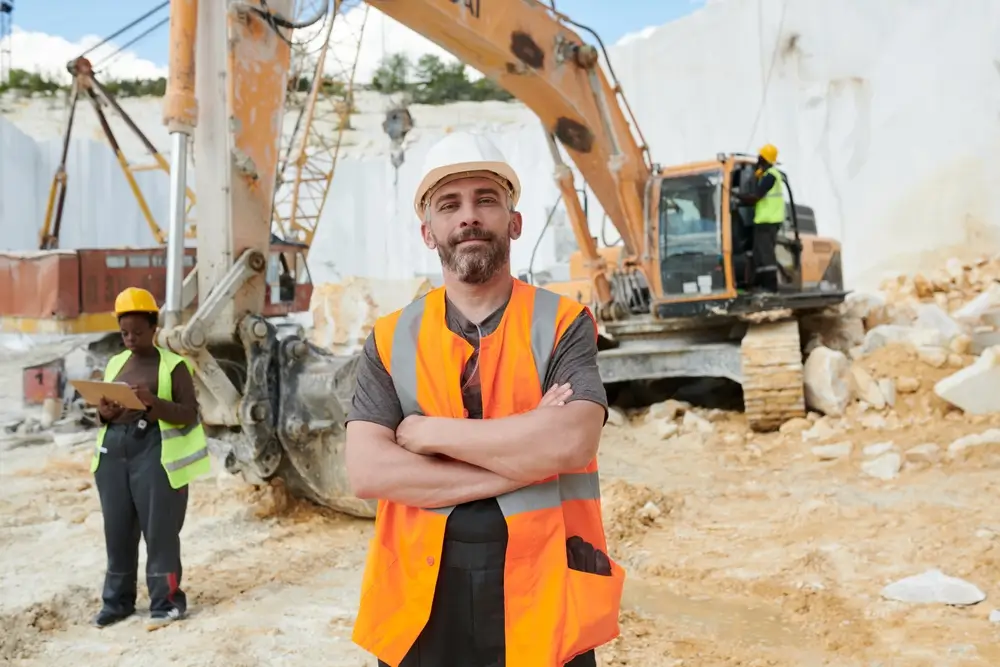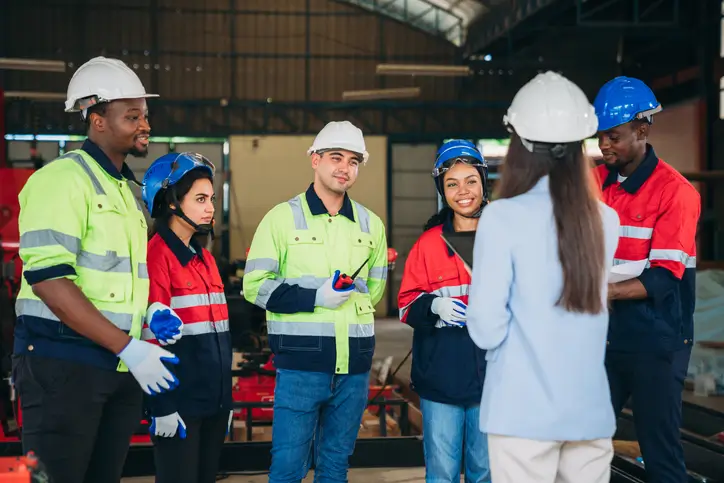Congratulations on completing your OSHA 30-Hour Construction Training! That’s a major milestone in your safety education journey and a big step forward in your construction career. The OSHA 30 card isn’t just a piece of plastic—it represents advanced safety knowledge, a commitment to safe work practices, and eligibility for leadership roles in the construction industry.
But don’t stop here.
Earning your OSHA 30 card opens the door to new opportunities, and what you do next can determine how far you go. This article covers five practical steps you can take right now to make the most of your OSHA 30 training and continue building a strong, safe career.
1. Add It to Your Resume and Online Profiles
Your OSHA 30 certification isn’t just a training milestone—it’s a valuable credential that employers actively look for. One of the first things you should do is update your professional documents and profiles to reflect your new qualification.
How to do it:
- Resume: Add “OSHA 30-Hour Construction Safety and Health Training” under the Certifications or Professional Development section. Include the date completed and training provider if relevant.
- LinkedIn: Post about your achievement to let your network know, and add the credential to your Licenses & Certifications section.
- Job platforms: If you use websites like Indeed or Glassdoor, update your profile with the OSHA 30 credential. Recruiters often search by keywords like “OSHA 30 certified,” so this simple update could land you more job opportunities.
By showcasing your OSHA 30 card, you demonstrate professionalism and a clear understanding of workplace safety standards—something employers value highly.
2. Apply for More Advanced Job Roles
With an OSHA 30 card in hand, you’re not just another worker—you’re someone with advanced knowledge of workplace hazards, rights, responsibilities, and risk controls. Use that to your advantage.
Potential roles to consider:
- Site Safety Coordinator
- Foreman or Lead Carpenter
- Safety Supervisor or Assistant Safety Officer
- Construction Site Manager
Employers often view OSHA 30 certification as a sign of readiness for leadership and adherence-related tasks. If you’re already in a field role, this could be your opportunity to move up to a supervisory position. Even if you’re just starting, having OSHA 30 on your resume can help you stand out for apprenticeships or mentorship opportunities.
Pro Tip: During interviews, don’t just mention that you have OSHA 30—talk about what you learned and how you apply it on the job. That kind of insight shows real value.
3. Check If You Need Additional Training (e.g., SST in NYC)
While OSHA 30 is a powerful credential, it may not be the final requirement for working in some areas, especially in cities with strict local laws like New York City.
For example:
In NYC, OSHA 30 is only part of the required training under the Site Safety Training (SST) program. Workers typically need additional hours, like a total of 40 hours of SST training, which includes OSHA 30, plus 10 extra hours of specific topics.
Supervisors may need even more—62 hours total.
What to do:
- Visit your local or state Department of Buildings (DOB) website to check job-site-specific training rules.
- Ask your employer or site safety manager what additional training is required based on your role.
- If you’re in NYC, explore the NYC DOB’s SST information page for the latest updates.
Taking a few minutes to double-check these requirements can save you from delays or disqualification on job sites.
4. Keep Your Card Safe and Know When to Refresh
You worked hard for that OSHA 30 card—don’t lose it!
Your card may be requested by:
- New employees during onboarding
- Jobsite adherence audits
- Union reps or site inspectors
Keep the original card in a secure place, and consider carrying a photocopy or digital scan with you (on your phone or in your work folder). That way, you’re always ready to prove your certification.
Do OSHA cards expire?
Technically, no, OSHA 30 cards don’t have an official expiration date. However, many employers and unions recommend refresher training every 3 to 5 years, especially as standards change and new hazards emerge.
Consider refreshing earlier if:
- You change roles or job sectors
- New safety regulations are introduced
- You haven’t taken any formal safety training recently
Being proactive shows you take safety seriously, not just as a requirement, but as a career mindset.
5. Continue Learning & Stay Updated on Safety Standards
Safety is an ongoing process, not a one-time class. To stay effective (and employable), continue learning.
Here’s how:
- Toolbox Talks: Participate in daily or weekly safety talks at your worksite. These short sessions help reinforce lessons from your OSHA 30 training.
- Subscribe to OSHA Updates: Sign up for OSHA newsletters or alerts via OSHA.gov. You’ll get info on regulation changes, safety tips, and training opportunities.
- Take Additional Courses: Based on your job duties or risks on site, you might consider:
- Fall Protection Training
- Confined Space Entry
- Scaffolding Safety
- Fire Prevention or HAZWOPER
- Fall Protection Training
Even a few hours of additional learning can help you avoid accidents and expand your skills.
Bonus Tip: Encourage your team members to pursue OSHA 10 or OSHA 30 if they haven’t already. Promoting a culture of safety helps protect everyone on the job.
Conclusion
Your OSHA 30 certification is more than just a box checked—it’s a professional stepping stone that can unlock safer, better-paying, and more advanced career opportunities. Whether you’re just starting in construction or aiming to move into a supervisory role, how you use this training matters.
So don’t stop now.
Promote it. Apply it. Build on it.
By staying informed and investing in ongoing learning, you’ll stand out as a safety-minded professional—and help create a safer, smarter construction workforce for everyone.
And if you’re someone who still has completed the OSHA 30 training for Construction or General Industry, sign up today.





